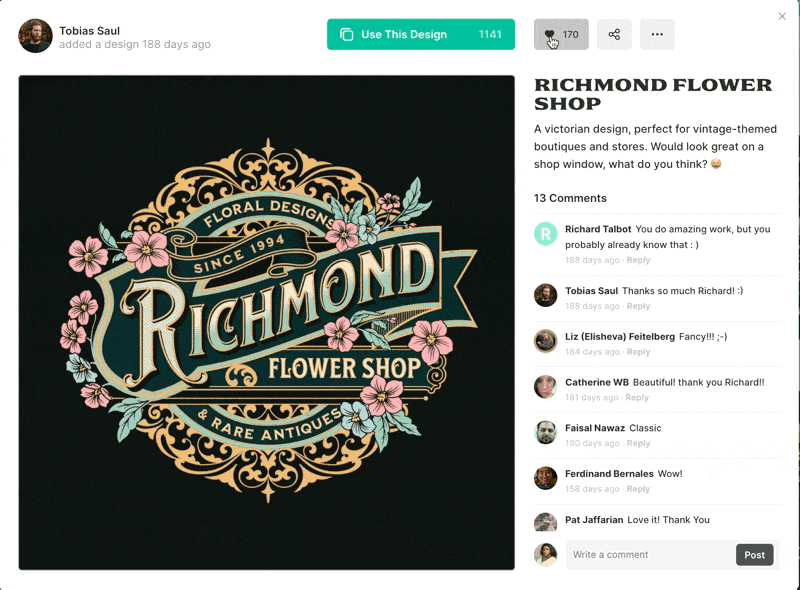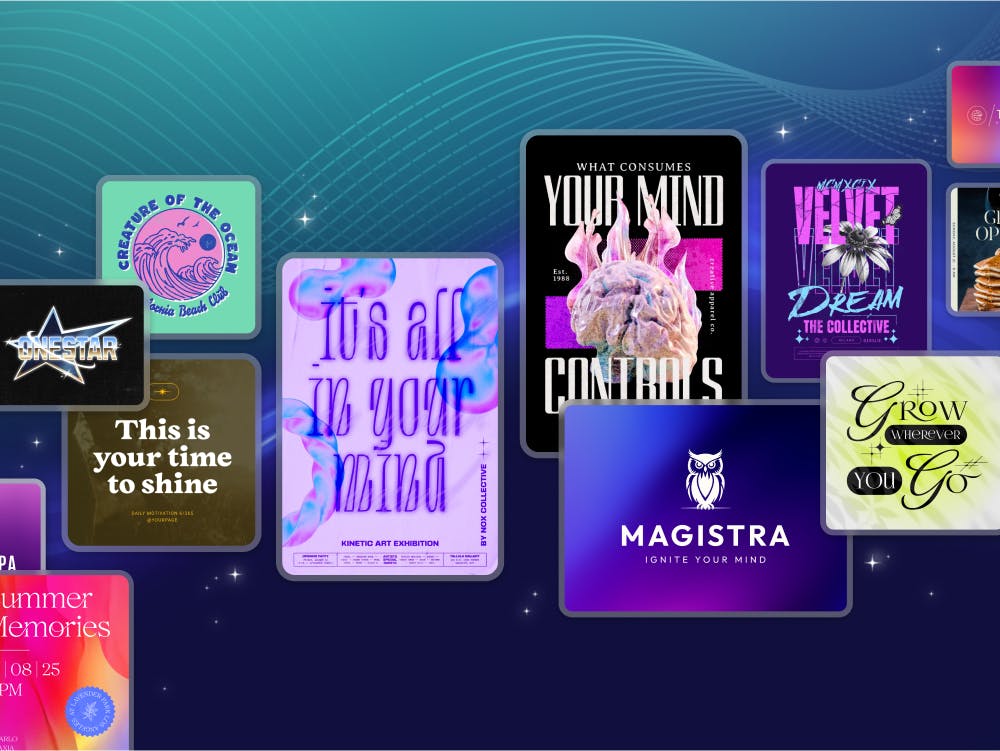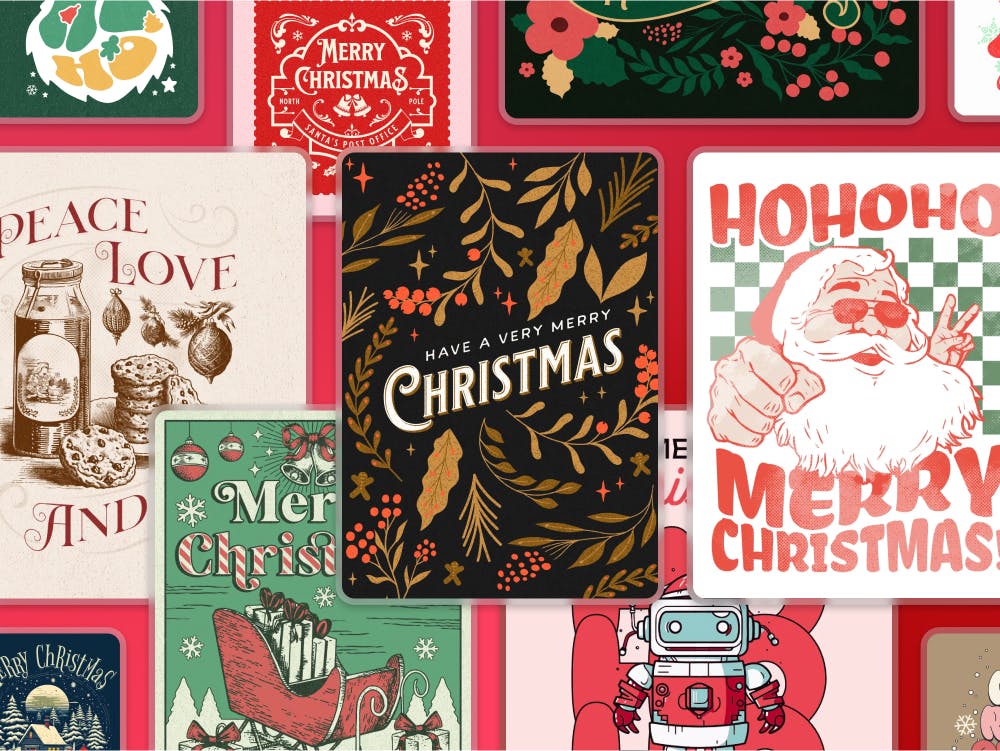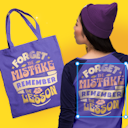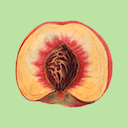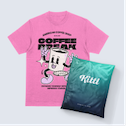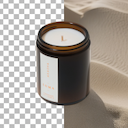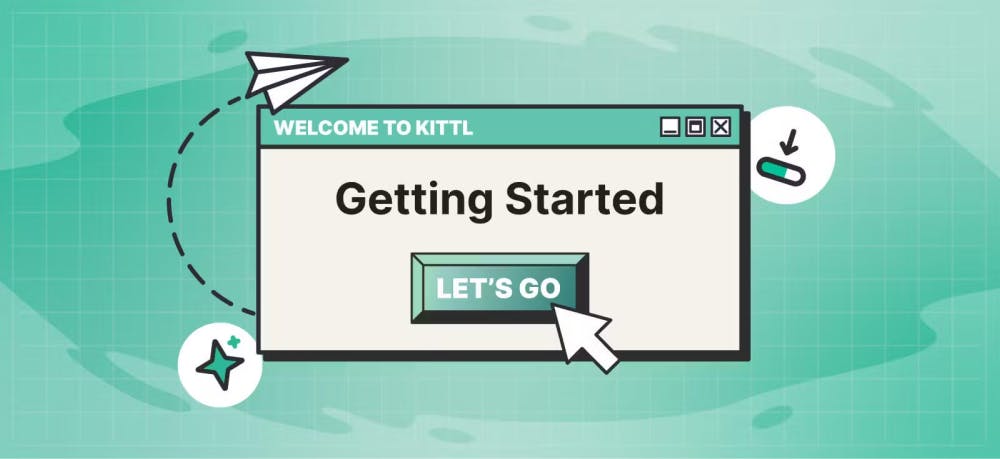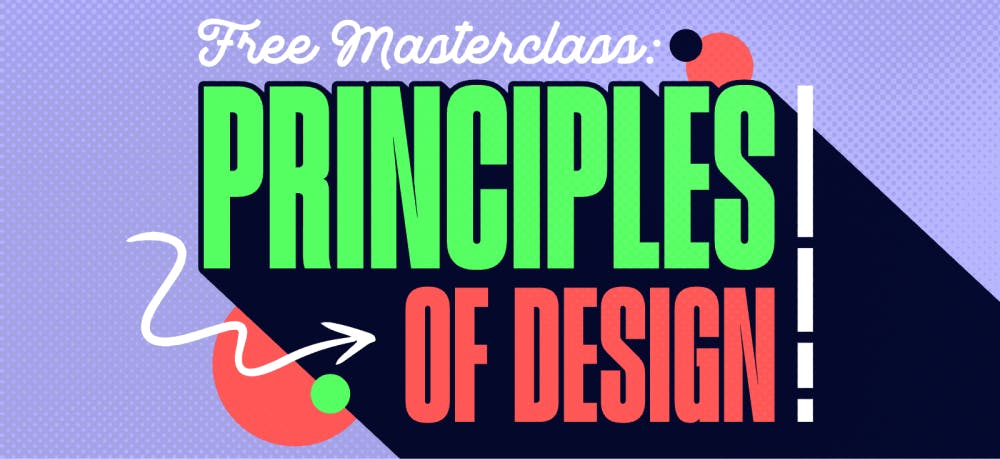Templates
Tools
Learn
Company
Home
Blog
Vintage
The Complete Vintage Logo Design Guide for All Vintage Enthusiasts
The Complete Vintage Logo Design Guide for All Vintage Enthusiasts

On June 18, 2022, a Twitter user named @culturaltutor made a thread titled “The Danger of Minimalist Design (& the death of detail).”
TL;DR of the thread?
Today’s minimalist design style is devoid of the character and identity vintage designs offer. The current logo design style trends mean everything (from logos to architecture) looks the same.
See for yourself:

His thread, like this one above by Jonathan Howard, went viral.
Since then, designers and other people alike, have responded to the question Jonathan asked in the tweet above:
“Why do so many logos look alike these days?”
This response by David Perell, Founder of WriteOfPassage, captured it best:

This article by Radek Sienkiewicz on Velvet Shark, and this piece from 2020, amongst many others, addressed the same question.
They all point to one thing.
There is a homogenization of logos today. For instance, in the fashion world:
Despite this trending “sameness” in logo styles, some designers crave creating something different and memorable. And according to Wix, logos that induce nostalgia (vintage) would make a comeback in 2022.
It’s probably why you turned to vintage designing.
There’s just something captivating about a vintage logo.
Take these two:
You’ll see, step-by-step, how to create unique vintage logos like the ones above in this guide. But first, do you recall what David Perell rightly observed to be why almost all logos are looking the same these days?
He said:
“My best guess comes down to two factors: Software and the internet... Designers are using the same tools, which exert the same unconscious forces on their creative process.”
”In other words, design software has a lot of influence on the end result of a design.
Most designers are either using Illustrator, the oldie, which takes so much time learning how to manipulate to your heart’s desire. Or, Canva, with its me-too templates that’s a turn off for pro designers like you.
The vintage logos you see above were designed with a different software, Kittl:

You’ll learn more Kittl and how it makes creating unique vintage logos seamless as we proceed.
First:
What Makes a Good Vintage Logo?
Outdated is not a euphemism for vintage designs, yet a lot of designers fail to grasp this. They tend to make vintage logos that are visually dull and unattractive.
In the words of Sarah Giffrow, Creative Director of Upswept Creative:
“The big challenge is to create something that recalls a vintage era but in a way that doesn’t look dated”
”See below an example of an outdated or bad vintage logo:
The logo example above was probably created with dated visuals and effects which is why it looks dull. A good vintage logo is one that functions in today’s world i.e one that perfectly strikes the balance between old and trendy.
As Grace Fussell, Graphic Designer &, Head of Creative Agency, Blue Whippet Studio says:
“Vintage graphic design styles are far from stuffy—the best examples reinterpret retro graphic design styles to create something new and exciting.”
”Here are three elements to consider for creating a lasting vintage logo:
- Typography: Using modern fonts like Helvetica or Bodoni will not give you that vintage look and feel. A good vintage logo uses typography like Hollywood vintage font, Bignord typeface, Blackriver, Victoria Fonts Collection, etc. For more typography inspiration, check out the Vintage Font Bundle.
- Color: Vintage logos are typically in light, and subtle colors like beige, brown, green, pale blue, etc. Using colors out of this range won’t give you the distinct vintage look.
- Geometric shape: Geometric shapes and vintage logos go hand in hand. If you picture 5 vintage logos right now, chances are 4 of them have geometric shapes like circles, squares, rectangles, etc. In essence, a good vintage logo should have any of the above shapes.
Now that we’re clear on what constitutes a good vintage logo let’s look at the…
Different Types of Vintage Logos
Art Deco
This design was popular in the 1920s and 1930s, and they often look like this:
Mid-Century Modern Design
This flat, colorful and bold design was developed in America in the 1930s and inspired designs up until the 1980s:
Psychedelic Art
It came about in the 1960s due to the influence of psychedelic music like The Beatles on hippie artists. This type of vintage design has whirling shapes, intense colors, and free-flowing lines:
Art Nouveau
This design style is popular in the late 19th and early 20th century. It is characterized by the use of curved lines and intricate flowery detailing:
That’s it for the types of vintage logos.
Let’s look at the steps involved in creating a memorable vintage logo and how you can easily do it in Kittl, The Ultimate Vintage Design Hub.
How to Create a Vintage Logo
I’ve broken the process of creating your vintage logo into three phases: Groundwork, Design, and Feedback.
Groundwork
Before you start any design in your tool, you need to do some groundwork.
Therefore, in this stage, here’s what you should do:
“Research enables you to fully understand the problem at hand, which in turn lets you design a solution that can be presented with confidence, armed with the knowledge you need to back up your decisions.”
”You must conduct in-depth market research, company research, and competitor research. This will help you determine the era your logo should come from (as this depends on the target audience’s age group), and how your logo can be different/unique from what is out there.
Why should your logo be unique? Aga Grandowicz, Team Lead – Marketing Design at Web Summit, has an answer:
“In order to meet the highest standards, a good logo needs to be properly conceptualised, well designed and unique. In particular, the aspect of uniqueness is often underestimated. In the current crowded market, making sure that a company’s logo idea hasn’t already been implemented in some similar form by somebody else is pivotal.”
”- Study logos associated with the era you’ve chosen and find inspiration for your design. Kittl’s template library is great for this. Just type in the era you want to replicate, and you’ll see design ideas:
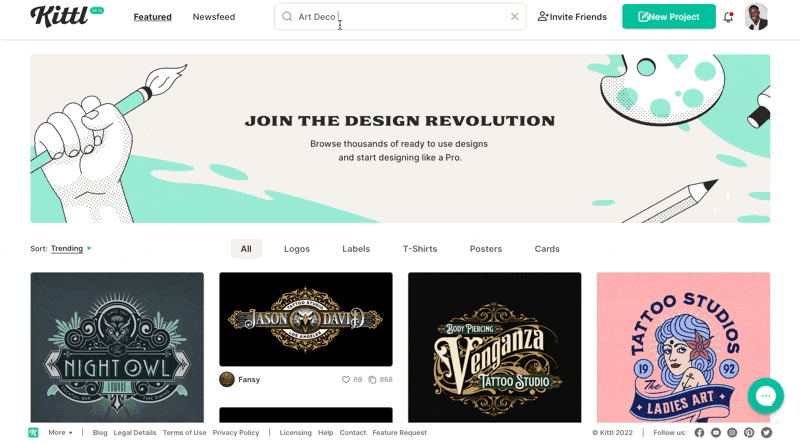
Also, studying your chosen era will help you determine your vintage logo’s color palette and font.
- Make a list of all the places/items the logo will be used as this will inform the design concept.
Design
The next stage is the design stage. Ideally, before embarking on any serious design creation, you should first brainstorm by sketching a rough outline or draft of your design. This sketch doesn’t have to be perfect; you can do it directly on Kittl.
Once you have this sketch, it’s time to bring it to life. If you brainstormed on Kittl’s community feed, you can easily import the design template and adjust it for your use.
However, if you sketched it elsewhere, you can create a blank template and upload your first draft or start afresh:
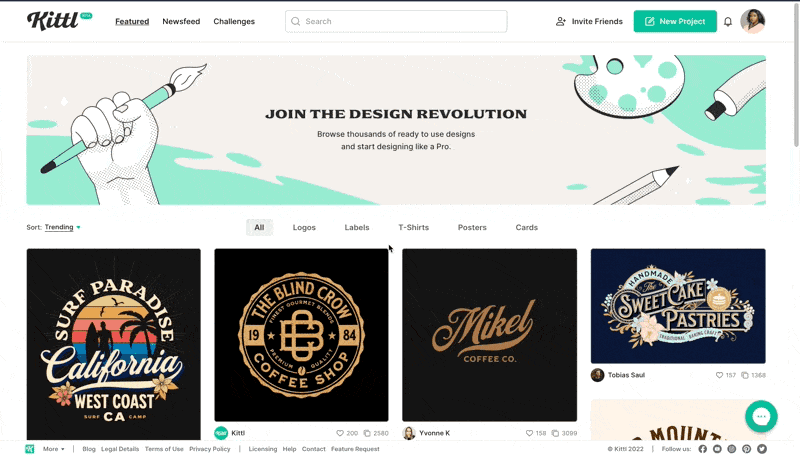
Feedback
Now after designing your vintage logo and what next?
Seek feedback.
Creativity thrives under collaboration, and great designs are borne out of actionable feedback. As the first sentence of this DesignLab article states,
“The best way to improve the effectiveness of your designs is to always be seeking quality design feedback.”
”You can seek feedback by showing your friends and family or submitting your design in communities like Kittl’s discord community.
Software for Creating Vintage Logos
Full disclosure: We’re not claiming Kittl is not the only software you can use to create vintage logos. x
Below, I’ve shown how you can create vintage logos with these three tools and why Kittl should be your preferred option.
Canva
Founded in 2012, Canva came in and disrupted the design industry. How? They made it easy for anyone to design with their ready-to-use templates.
However, their strength- thousands of drag and drop template designs- is also a weakness for a vintage enthusiast like you because their vintage templates are basic at best. You cannot produce professional vintage logos like this even on Canva’s paid plan:

These are not so stunning for a vintage enthusiast like you, right?
Not only can you not create unique vintage logos on Canva, but it also is not even advisable to create a business logo of any type on Canva.
One of the major reasons why is because you won’t have access to the vector format of your logo. This isn’t a problem in Kittl, as with a pro or expert account, you have the option to download your design in a vector format.
Adobe Illustrator
Now unlike Canva, Illustrator can be used to create some pretty cool vintage logos, and it is the go-to industry standard for many designers. This is because the tool has a lot of features and functions to help you whip up complicated designs.
However, there is a catch.
Illustrator is quite challenging to learn to use, and achieving cool designs like this is no mean feat for a newbie or mid-level designer. June Escalada, an experienced designer, opined on this in an article:
“Adobe Illustrator has so many tools, and yes they are useful and easy to get started, but it takes time and practice to be good. It’s easier to draw circles, shapes, trace images but when it comes to logo design, that’s a different story. It can get very complicated.”
”The ease of use of Kittl when compared to Illustrator is why Eric Hatheway, a Design Professional vouches for Kittl:

Even Ember Blue, a devout Illustrator user, testified to how simple it is to create complex vintage logos on Kittl:

Also, Illustrator doesn’t have in-app templates. You’re literally going to be staring at a blank slate unless you visit their stock website.
On the other hand, there are templates available in Kittl, and not the canva-kinda templates either. I’m talking about really sophisticated templates to help you avoid the blank page syndrome.
Finally, Illustrator is quite pricey as it starts from $20.99/month for individuals with only 7 days free trial.
Kittl has the upper hand in this area as the tool has a forever free plan which gives you access to over 90% of the tool at no cost:
Never Run Out of Vintage Logo Creation Ideas
Kittl brings the best of both worlds to vintage logo designers: a tool to create unique vintage logos and a community of other designers. It is why Kittl is known as the ‘Vintage Design Hub’:
With Kittl’s community and news feed feature, you won’t run out of design ideas again even if you’re a newbie like this user:

Feeling stuck, just scroll through the feed and get inspired by other designers. Love someone’s design? Like, and comment to let them know! Spread good vibes always:
